You are here
What to Do When Your Hand-Sewing Thread Knots Up
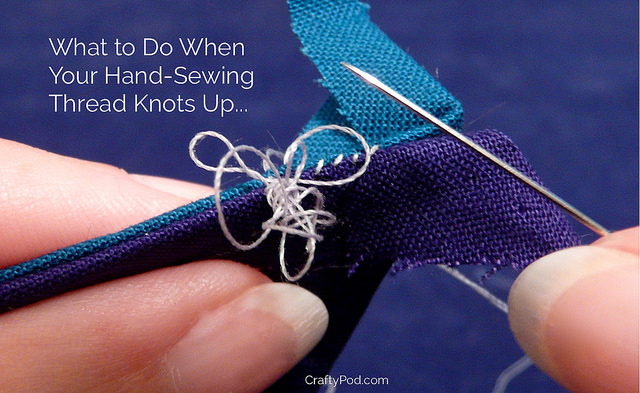
Sooner or later, every hand-sewist ends up getting an unexpected knot in their thread. This doesn't mean you're any kind of a bad sewist! It's just simple physics at work.
Luckily, though, there are some ways you can do magical counter-physics and either prevent or solve those knots. And that's what this post is all about.
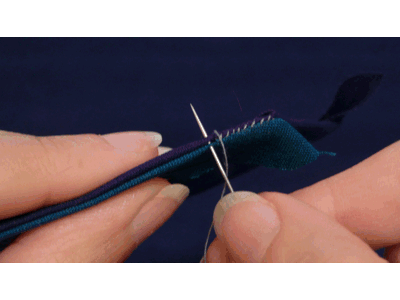
It's all in the twist…
The number one reason your thread ends up in knots is that you're twisting it. You're not doing this consciously or anything – it happens in tiny little increments during those moments you let go of your needle and pick it back up again.
Most of us, in those moments, turn the needle just a little. And those tiny turns add up, over a lot of stitches, into twisted thread. This is especially true with stitches like whipstitch, where you're moving the needle the same direction over and over.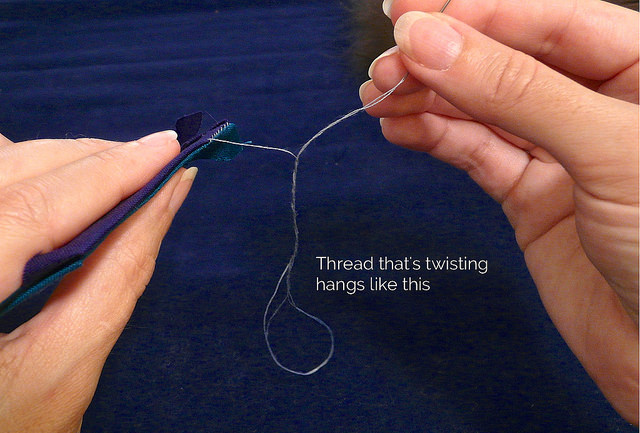
How do you know your thread is twisting? Try this: Hold your work in one hand and your needle in the other. Let the thread hang between them. Now, bring your hands slowly together. Does that hanging thread immediately begin twisting up on itself? Then you're twisting it while sewing, my friend!
If your thread is twisting upon itself like this, imagine what happens when you try to pull all that twisty mess through your fabric. Twisted-up thread has no choice but to get wadded-up and knotted-up.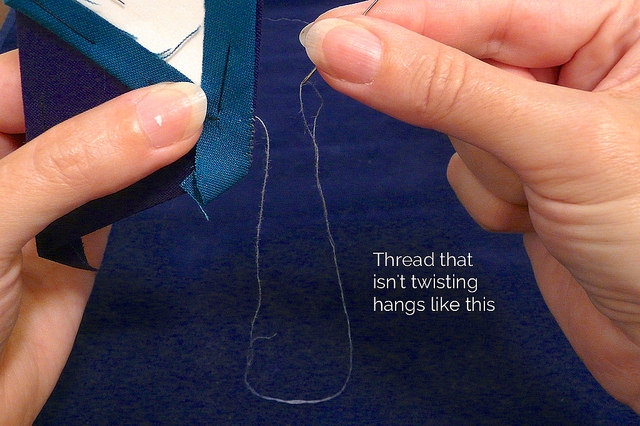
Preventing that twist
…So, the easiest way to keep your thread from knotting in the first place? Counteract that twist. Cultivate a habit of spinning your needle in the opposite direction until your thread smooths out. And do this any time you see that twisting start to form.
How do you know which direction is opposite? Easy: if the twisting gets worse as you twirl your needle, you're twirling in the wrong direction, Twirl in the opposite direction, and you'll see all that twisting fall out of your thread. Then, proceed with stitching.
What if the danged thread knots up anyway?
Don't worry – luckily, the knots that form from twisted thread are almost always one of two kinds, and both are quite fixable.
The first and most common knot looks like a mess of thread, as you see above. Often, this thing isn't really a knot at all – it's just a tangle. But I've seen many sewists turn it into a knot when they yank on the thread and try to force it to pull through the fabric. Don't do that!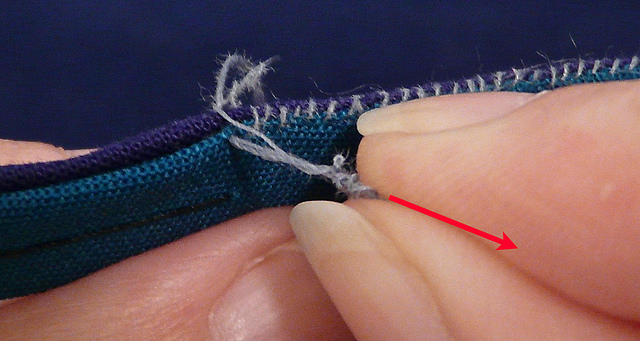
…Instead, the minute you see that messy tangle forming and the thread starts resisting your pull, stop! Set down your needle and gently take the tangly stuff in your fingers. Then pull it gently toward you, and away from the fabric, This usually untangles the tangle and prevents the knot from solidifying. Then you can ease the stitch through and then un-twist your thread as we discussed above.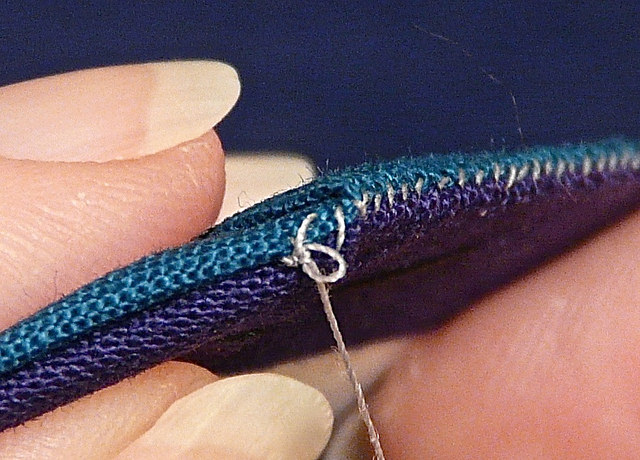
The other common knot looks like a little loop of thread with a knot in it. It's also easy to fix.
Again, the minute you see this knot happen, stop what you're doing! Take a deep breath and relax. The more gently you handle the thread at this point, the better chance you have of fixing this knot. If you get all angsty and try to force that thread through the fabric, you'll end up tightening the knot and making it irreparable.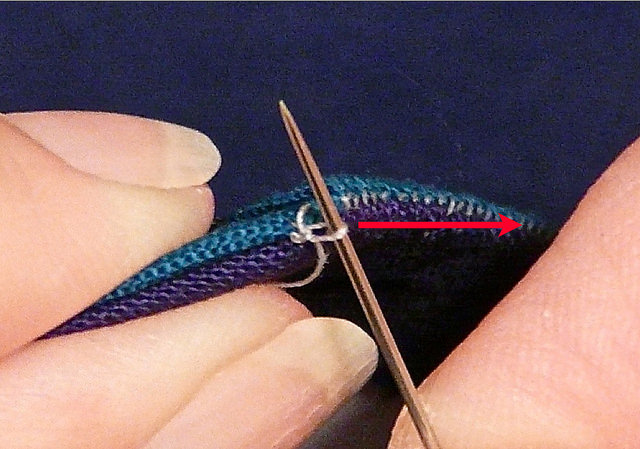
So, insert your needle in that loop. (If your thread is very twisted, it may take a little doing to locate the loop. If you have some reading glasses or a magnifier, grab 'em – they really help.)
With your needle through that loop, gently pull the needle away from the fabric, You should see the knot begin to slide toward that needle. When the knot reaches the needle, stop pulling and remove the needle.
What remains now looks like a knot, but is really just a tiny clump of twisted thread. Take it gently in your fingers and continue tugging it toward the bend in the thread. You should feel that knot untangle itself under your fingers. Neat, huh?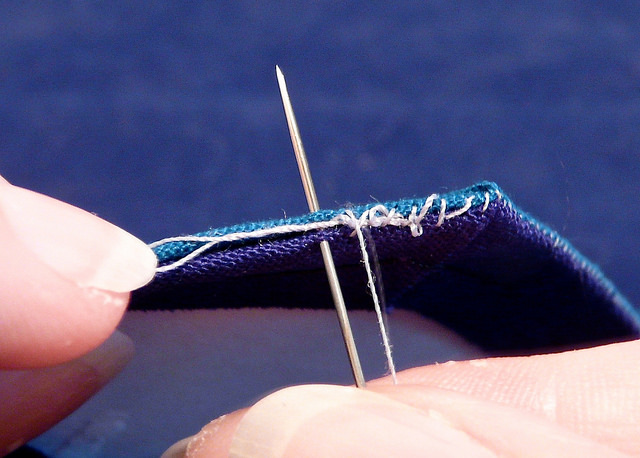
If the knot won't come out…
Hey, it happens. The best thing to do in these cases is figure out how to move forward. Sometimes you can cut the thread so that you have two fairly long strands – one hanging from each side of the work. Then you can tie those in a double-knot with your fingers, cut the ends, and start sewing again with a freshly-threaded needle.
Sometimes your knot can't be cut. You're stuck with a tangle of thread on the back of your work. If you still have a length of usable thread on your needle, you can always lay the tangly stuff flat against your seam line, and continue your seam right over the top of it as shown above. That's not a pretty fix, but it secures the seam and saves you from having to rip the whole thing out and start over.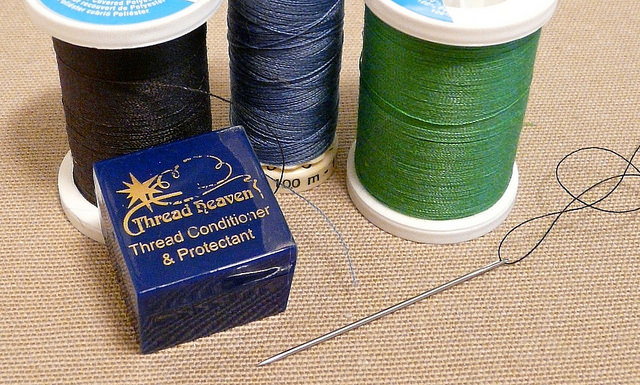
Other little tricks to try
Use shorter strands of thread! It's very normal to want to use the longest strand of thread possible, so you won't have to stop and re-thread your needle anytime soon. The problem is, the longer your thread, the more room there is for twisting – and also, the more beat-up your thread can get over time. Think of it this way: your thread is getting repeatedly dragged through itty bitty spaces, and being abraded by the fabric (and paper templates, if you're EPP-ing) all along the way. That abuse adds up, and thread that's beat-up is much more likely to tangle.
So, learn to love re-threading a little more. Get yourself one of these dandy needle threaders. And work with strands of thread that are no more than about 18" in length. It makes a huge difference.
Get some thread conditioner. I adore my Thread Heaven, which is a mix of wax and oils. You pass your strand of thread over its surface, and then rub the thread a few times to work the stuff in. This gives your thread extra smoothness and resiliency and really cuts down on tangles. With this stuff and the needle-counter-twirling technique above, I almost never have to deal with knots.
OK, holy crap – when I sat down to write this post, I had no intention of writing a doctoral dissertation, but I see I have. Is there some kind of award for Nerdiest Blog Post About Thread Knotting EVER? Because I want one.
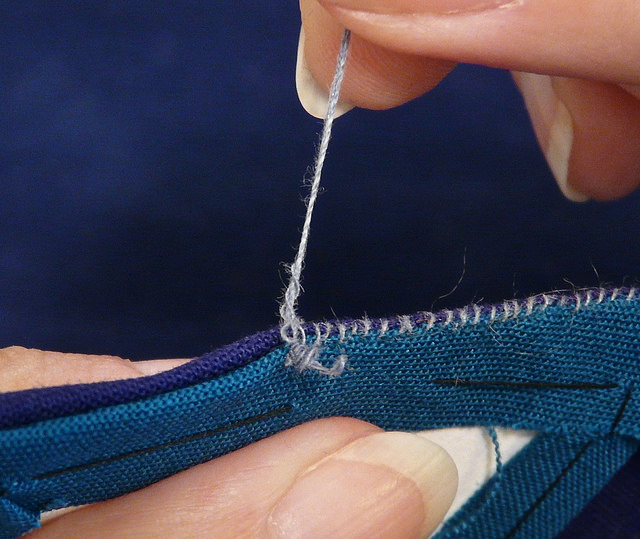

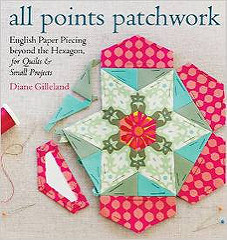
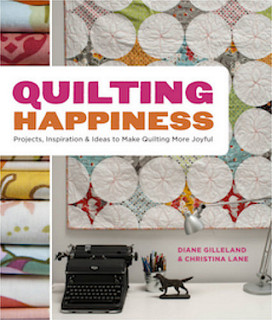

![Validate my RSS feed [Valid RSS]](../../../sites/files_cp7/valid-rss.png)
Comments
Hi,
Such a great post, Thanks. When I read it, I thought of what I have been using in my stitching on of beads, as I use VERY long pieces of thread.
I have a block of natural bee's wax, and I run my thread through that. It seams to settle the thread, and keeps it from twisting.
I have your Quilting Happiness Book and I really enjoy it. Looking forward to your next book.
Hi, Kim -
Thanks so much for the kind words about Quilting Happiness! I can't wait to share this new book with the world, too.
You are right - beeswax is also a great thread-preserver. I don't use it for EPP because it seemed to make my thread a little stiffer, and I wasn't liking that feeling for the tiny hand-stitches. But the wax is totally great for lots of other stitching applications. Thanks for mentioning that!
WOWEE I didn't know that second trick with the loop, that is so cool! I'm gonna go make some knots right now and try it out!
Thank you for that very detailed post, Diane! It reminds me of Natalie Chanin and her advice to "love the thread", have you heard about it? She talks about it in all her books, and there's a summary in that video: https://www.youtube.com/watch?v=8DWQB5CGY0o
Her company uses a thread with a polyester core surrounded by cotton, but I guess it can't hurt to use the technique with polyester thread as well?
OOh, I love this video - thanks for sharing the link, Veronique! I've used these techniques with cotton, all-poly, and poly wrapped with cotton threads. For EPP, incidentally, I've been using a poly thread more and more. The abrasion that comes from pulling thread through the edges of those patches seems to beat up a pure cotton or cotton-wrapped thread too much. But the poly really stands up. For basting, though, I like cotton thread, because it has more "grab" on the fabric.
I certainly suffer from knots! have found it I hold the work high up in one hand and let the needle drop it slowly untwists but it is remembering to do it, also have some beeswax and again have to remember to use that seems like I am forgetful!
That needle-hanging trick is a great one, Margaret - thank you for sharing that. And if you hold the work over a flat, light-colored surface, then you can easily see the needle if it happens to fall off the thread once it untwists.
Hey, I learned something today! I love it when that happens. Thanks for taking the time to not only write about it, but to post such great photos too. I really appreciate the helpful hints! From one "nerd" to another...
Wax your thread. Wax your thread. Wax your thread. Do not sew a stitch without waxing your thread.
Great post. Extremely useful information.
The very first thing we must do to prevent thread knots is to thread the needle in the correct direction! When you unspool your thread for hand sewing you must always thread the end THAT YOU JUST CUT into the eye of the needle. The reason is because you will then be drawing the thread through your fabric in the same direction as the twist of the thead instead of against it. All spooled threads are wound this way. We know that thread is made up of several finer threads twisted together. When you sew against the twist, each pass through the fabric wears the thread surface, causing damage to the fibers and stress on the twist. Now you're just asking for knots to form!
That's a great piece of information, Robbin - thank you so much for sharing it!
Glad it helps! And if you're like me and you sometimes use thread from a wound bobbin, you must remember that it's already been spooled off in the other direction, so thread the uncut end. I learned this from Claire Shaeffer..
Wow, thanks so much! I was lucky enough to see this on Pinterest and jumped right over to read your article. This can be a very frustrating problem with my favourite part of quilting, hand appliqué. So nice to see something to take away the stress of knotted thread. And now I've found your site. Double bonus!
This is really helpful! I'm usually okay fixing loop knots, but the big tangle knots make me crazy.
Recently someone in my knitting group gave me a spool of Mettler silk finish thread -- she says it's all she uses for hand piecing, and after trying it I can see why. It's a little bit thicker than what I'd been using, but it seems way more resistant to tangling. (I think it's mercerized.)
Ooh, I'll have to get some of that to play with. Thanks, Daisy!
You overlooked the importance of the direction of the thread's twist. If you knot the wrong end of the thread, the unknotted end tends to untwist and tangle. Thread the needle and then knot the end before cutting off the length you need. That guarantees that the twist is going the right direction. This reduces the amount of freying on the free thread end. Do the reverse when using thread that has been wound onto a bobbin. I learned this tip from a thread sales rep.
I have found that if I keep a dryer sheet in my sewing kit and just run the needle thru it after it is threaded, that works too. Very little cost because I cut the sheet into thirds and it lasts quite a long time.
Oooooh, I am totally trying that one! Thank you, Jackie!